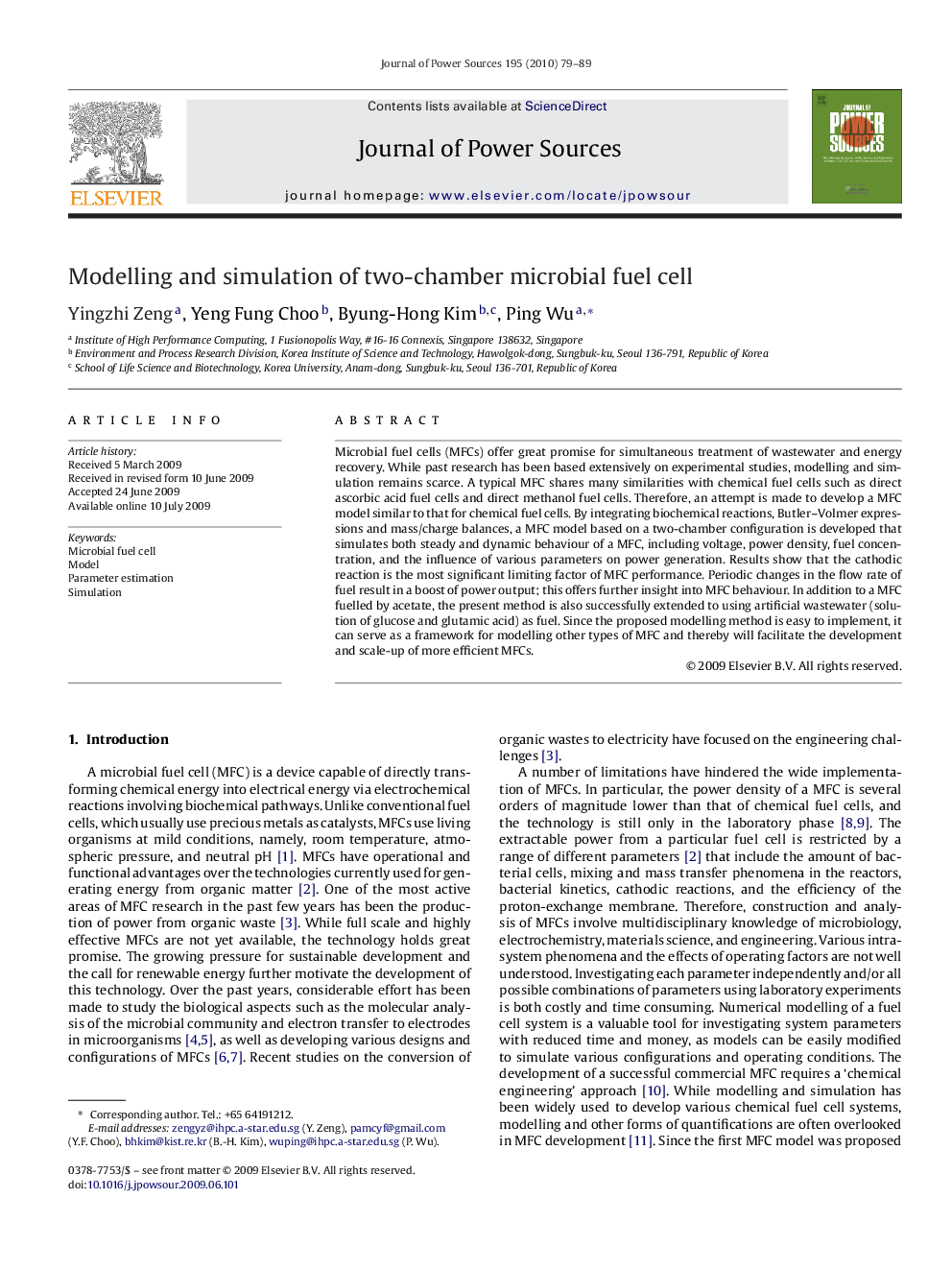| Article ID | Journal | Published Year | Pages | File Type |
|---|---|---|---|---|
| 1293950 | Journal of Power Sources | 2010 | 11 Pages |
Microbial fuel cells (MFCs) offer great promise for simultaneous treatment of wastewater and energy recovery. While past research has been based extensively on experimental studies, modelling and simulation remains scarce. A typical MFC shares many similarities with chemical fuel cells such as direct ascorbic acid fuel cells and direct methanol fuel cells. Therefore, an attempt is made to develop a MFC model similar to that for chemical fuel cells. By integrating biochemical reactions, Butler–Volmer expressions and mass/charge balances, a MFC model based on a two-chamber configuration is developed that simulates both steady and dynamic behaviour of a MFC, including voltage, power density, fuel concentration, and the influence of various parameters on power generation. Results show that the cathodic reaction is the most significant limiting factor of MFC performance. Periodic changes in the flow rate of fuel result in a boost of power output; this offers further insight into MFC behaviour. In addition to a MFC fuelled by acetate, the present method is also successfully extended to using artificial wastewater (solution of glucose and glutamic acid) as fuel. Since the proposed modelling method is easy to implement, it can serve as a framework for modelling other types of MFC and thereby will facilitate the development and scale-up of more efficient MFCs.
